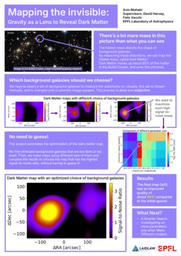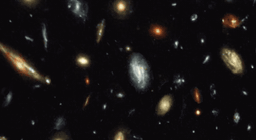Mapping the invisible: Gravity as a Lens to Reveal Dark Matter
Dark Matter is invisible, and mapping it is often a slow and subjective process. But with the right method, mapping it can be faster, consistent, and ready for more clusters. If you are interested, you can find out more in my report!
About 85% of the universe is made of Dark Matter, and this matter cannot be seen.
However, its gravity leaves its traces, as it bends and distorts the shapes of the background galaxies.
By measuring these distortions, we can map Dark Matter. But choosing which background galaxies to measure these distortions on is not an easy task. It is often done slowly and subjectively. My summer research aimed to change that.
The methodology and tools, along with the challenges I faced with are outlined in this report. If you are also interested in mapping the hidden secrets of the universe, this report was meant for you!


Please sign in
If you are a registered user on Laidlaw Scholars Network, please sign in